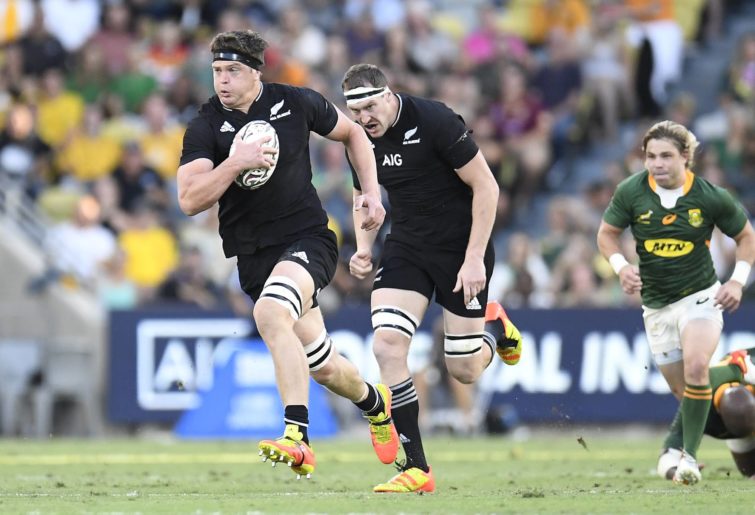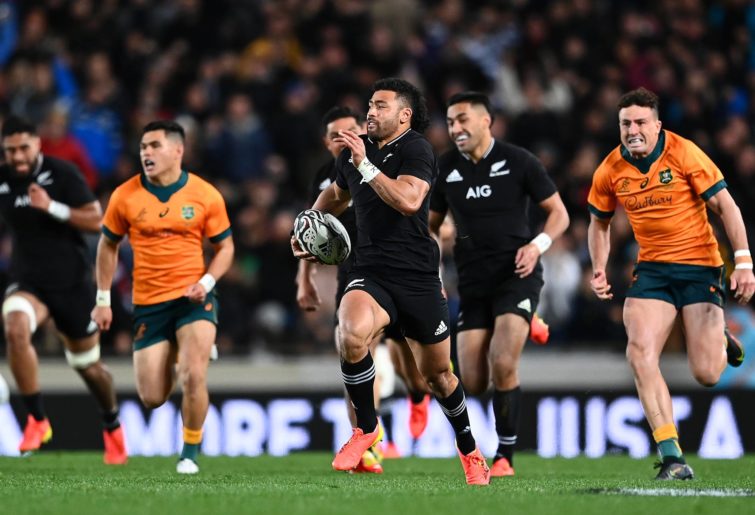Doesn’t seem that ago that the All Blacks had lost five out of their last six Test matches and the rumour mill was rife.
Home visits to coach Ian Foster by the New Zealand Rugby CEO and High Performance Manager while a NZR Board member was rumoured to be running around Christchurch with a contract for Scott Robertson, which he wouldn’t sign because Joe Schmidt in the coaching team was a condition of getting the big chair. Not NZR’s finest hour it is fair to say.
No-shows at press conferences, calling the rugby press together and then having nothing to say while that same rugby press seemed to think changes in fortunes were linked to low probability of success selections.
But no matter – all that was required was a catalyst for change, a re-focusing of the mind, different ways of looking at the same problem and different voices around the table, and that was eventually achieved, albeit with a few reputations broken along the way.
It was a messy public relations disaster for the rugby union which I hope they perform their own review on, so keen on this process are they, but by end of The Rugby Championship there were some serious rugby building blocks in place on which to build for the Rugby World Cup.
It is not so much what they are doing new – although there are a few obvious changes in the forwards in particular. It is what they have stopped doing and those they have stopped selecting and the downstream results (win/loss aside) are hidden away in the dark corners of the statistician’s basement offices with a few shared here.
After starting off the season with a clearly stated plan to build combinations and avoid rotation, the All Black selection world got turned upside down. From the second Test loss to Ireland to the second Test win in Johannesburg, the All Blacks had 17 personnel and position changes in the 23-man game day squad – 17!
Damned if I can think of such a monumental change in selection policy over such a short period.
Out ran the seasons fourth-choice loosehead, third-choice hooker and along with the year’s fourth-choice tighthead and his back-up on the pine was No.5 in line for the year. And what a massive change they collectively made.
Samisoni Taukei’aho topped the competition try-scoring count, babyfaced Ethan de Groot got Frans Malherbe to pancake twice in Jo-berg while Tyrel Lomax must surely be holding a press conference shortly to announce the source of his newfound superpowers. (There are some recent public comments from Jason Ryan on the front rowers that are worth a read).
The selections of Shannon Frizell and Scott Barrett in the blindside shirt have surely, fingers and everything else crossed, finally sounded the death knell for the wide-ranging loose forward experiment.

(Photo by Ian Hitchcock/Getty Images)
Frizell was an immediate foil for Sam Cane at breakdown time as well as a primary lineout option while his defensive ball-carrying made exits clean and simple. Gone were the gaps through the All Blacks ruck so easily exploited by the Irish and the French, gone is the rigid 1-3-3-1, in fact, pod structures appear to be gone altogether.
De Groot and Lomax are comfortable defending next to each other in the middle of the park, there are different roles for the second row close to the ruck with Sam Whitelock topping the turnover stats, while Ardie Savea showed that he can play narrow with high involvement and still produce the big razzle-dazzle plays when required.
What an absolute pleasure it is to see our 6-7-8 all in the same television picture over and over, and when Cane and Frizell fly into a counter ruck watching Savea work hard to get from the blindside to the defending A slot on the openside will please many an old New Zealand rugby heart.
The simplicity around the exits saw a real change in the way the All Blacks started matches. Gone was the pressure they put on themselves, and they went from going behind in the first four games of the year to leading out in the next five, even being 15-6 up in the loss to Argentina.
Also gone at last is the flat attack theory, and with it we have a change of operator in the 10 shirt. Never really understood the strategy of running quickly towards a defensive line that is flying up in your face thus doubling down on your own reaction time which seemed to force errors from the possession team.
With Richie Mo’unga varying his depth in the pocket and with a real triple threat of his rapid pass distribution, run or kick, and with further variation options available from both second-five-eighth and fullback, the All Blacks took away a target for the defence to go after. You can’t hit what you can’t catch, after all (apologies to The Greatest for the paraphrase).

(Photo by Hannah Peters/Getty Images)
The statistics of post-dumping of the flat attack are really genuinely needle moving.
Turnover conceded, which has been a major issue for the All Blacks over recent years, fell from a match average of 15 to nine for the last five matches of The Rugby Championship.
Total involvement from the outside backs went from 50 up to 70 in the second half of the season.
Positive actions from the outside backs, Defenders beaten etc, moved from 12 per match to 22.
Not surprisingly, kick numbers versus South Africa and Argentina were higher in the wins than the losses, the biggest win over Australia contained the highest number of in game kicks, while 23 kicks were used in the first Test win way back over Ireland.
In would appear based on all of the above, and the turnaround in results after the loss at the Mbombela Stadium, that the very flat attack designed to run opposition off their feet was significantly less effective to those ends than a truly balanced attack. Good news that this has been highlighted, in the main repaired, and a game plan more suited to the way the game is currently being officiated now looks to be in place.
Perhaps most pleasing is the way the All Blacks are talking about their approach to the game now. Power and physicality have replaced tempo and pace as the go-to words and we saw this from coach Foster and match day captain Sam Whitelock before the Eden Park Test against the Wallabies.
How much better is that than watching Sam Cane trying to talk about taking a tempo game to the next level and looking about as comfortable as a fart in an astronaut’s suit as we saw before the Irish series?
To hear out Beauden Barrett openly and comfortably state in an interview that he needs to stay out of Mo’unga’s way during a match shows that some pointed conversations have been had to back up this new match approach and that the players are listening and accepting this new way.
This All Black squad is a long way from the finished article as skill errors in scoring positions, offensive penalties conceded and unfathomable flat patches have demonstrated but northern opposition and further embedding of this new approach will stand them in good stead before the 2023 launch.
The big test of this coaching group will be in the selection of the squad for the Northern Tour. There can be no going back now and there are a good half a dozen names who will seriously test this coaching group’s resolve.































































































